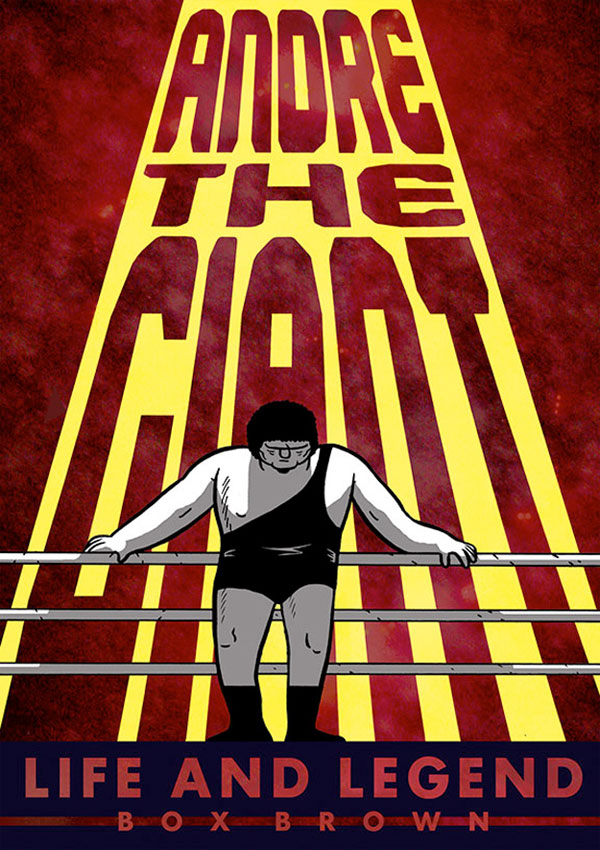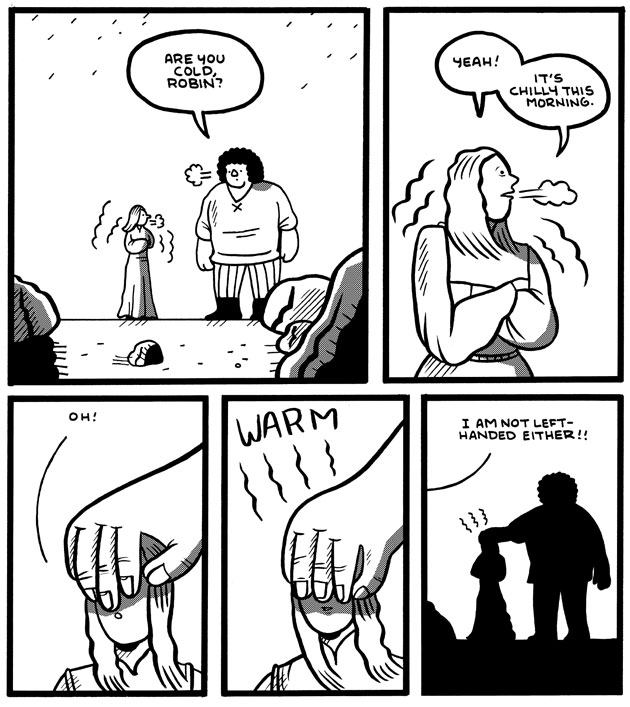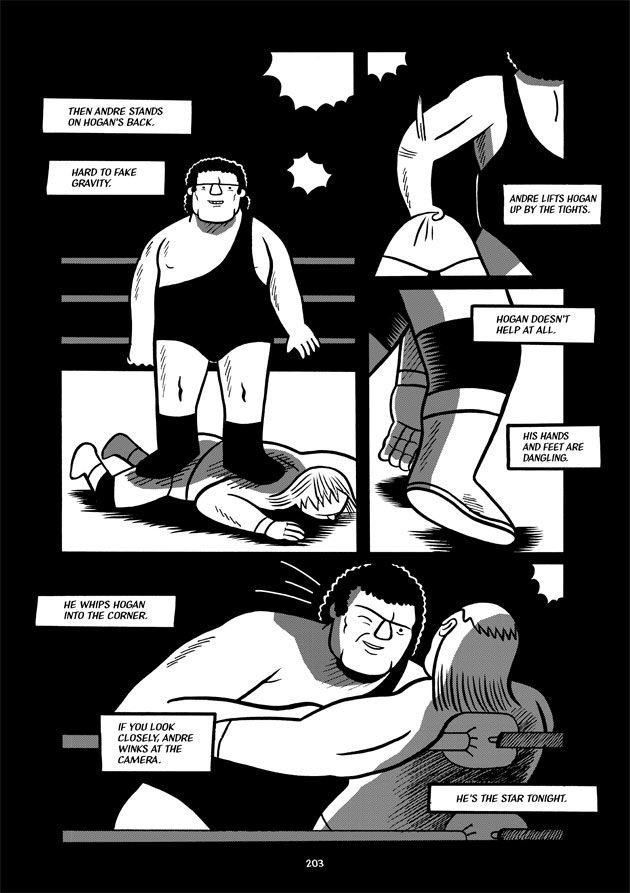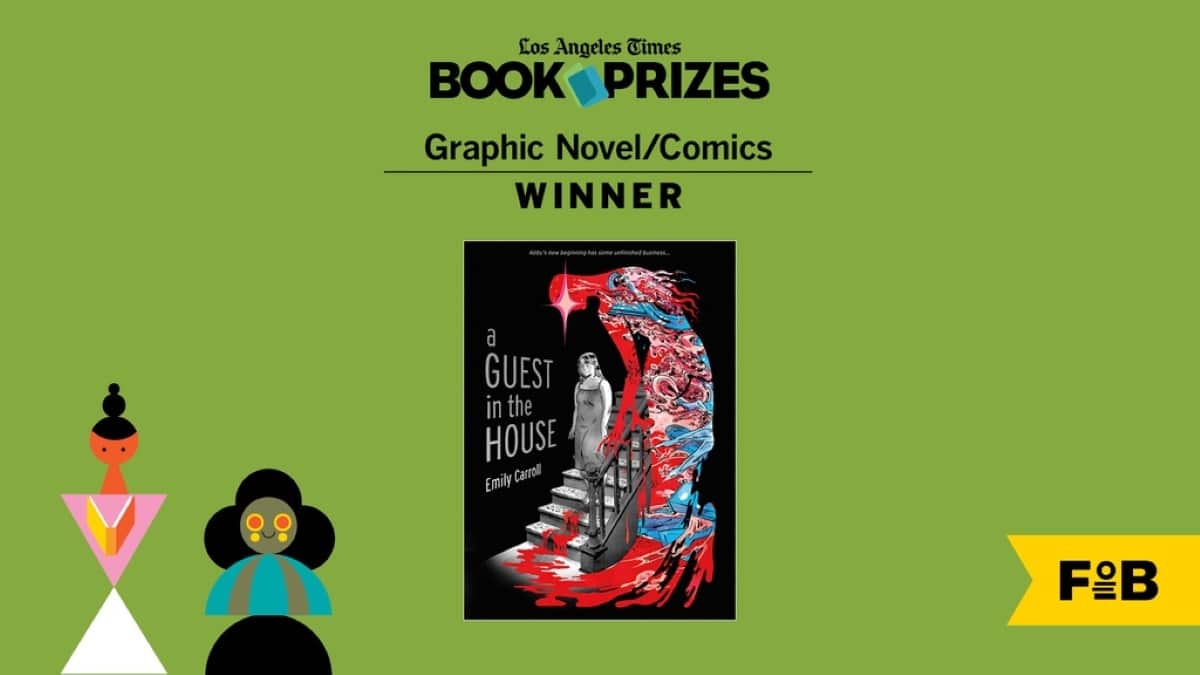Standing at seven and a half feet tall, pro-wrestler Andre The Giant more than earned his title over a three-decade career which saw him wrestle in America and Japan and memorably then turn his attention to the silver screen. And this month sees the first substantive biography of André René Roussimoff published by First Second. Written and pencilled by Box Brown, ‘Andre the Giant: Life and Legend’ is a sweeping look at the life of a man who towered over wrestling for years.
The book explores the aspects of his life which fans were never able to see – when he wrestled, it was during a time where all wrestlers were bound to keep the secret of wrestling from their fanbase. Wrestling was meant to be real, not a staged entertainment, and all the wrestlers had to keep up appearances at all times. As a result, Brown’s book is an absolutely fascinating look at a secretive period for ‘sports entertainment’.
First Second offered me the chance to speak to Brown about what inspired him to start the project, as well as how he views Andre himself, the difficulties of researching a story which was deliberately hidden from the public, and how he approached the daunting task of chronicling a prolific and fascinating career.
Steve: What made you want to try your hand at a biographical comic? You’ve made autobiographical work before – but what interested you in tackling Andre the Giant’s story?
Box: I’m a life long wrestling fan and I think of Andre as the perfect window into this world. But, like most of my projects it started with a mini-comic. I had been reading about Andre and saw that he’d gotten a ride to school from Samuel Beckett. I thought: “Hey that would make a cool mini-comic.” And things progressed from there.
Steve: I believe that the project springs from a series of short stories you told in The Atomic Elbow fanzine. When did you think that you’d like to take these short stories and put them into a longer-form work?
Box: Actually, the mini-comics existed before the Atomic Elbow piece. I just really wanted to contribute to the Atomic Elbow. I had made about 40 pages worth of mini-comics and just had endless material to work with. It just kept growing and growing, like the man himself.
Steve: When writing this book, were you looking to tell as completely a true account as possible? Do you view this as a work of comics journalism, first and foremost?
Box: The truth in comics like this is extremely important to me. It was extremely difficult in this particular case to find what the actual truth was because of the nature of Professional Wrestling and the circumstances of Andre’s life. All of Andre’s stories sound far fetched. Further most pro-wrestling stories, even those told as “truth” are suspect. In this case, I used my best judgment in depicting the stories as truthfully as possible. I definitely see the work as a piece of comics journalism. It’s also informed a lot by my love of documentary film.
Steve: What kind of approach will you be taking with the narrative of the book? Are you looking to tell the chronological story of his career, or will this be more snapshots of various key or interesting moments from his life?
Box: Well, it’s a little of both. I was working mostly with stories that were already out there and already existed in some form. So, at times it might feel like a snapshot of Andre’s life. But, it’s also chronological and contains a lot of stories that happened in his personal life.
Steve: Were there any stories you were unable to include in this book, in that case? Were there any moments which you considered including, but then cut?
Box: There were a handful of moments that were cut. There was a story regarding how Andre used the bathroom in Japan, or I guess I should say, didn’t use the bathroom. It was kind of too gross, even for me. If you can imagine that a person couldn’t fit in a small bathroom; he’d have to, well, figure something out.
Steve: Andre was visually a dominating presence, and you highlight this in your work – he stands out of each panel, especially when he shares the page with other characters. How did you design him for this story? Did his personal physical appearance change the way you approached sequencing each page?
Box: I was mostly concerned with portraying Andre as almost indescribably large. It wasn’t super concerned with keeping realistic scale as much as I was making sure Andre was always enormous. Andre was almost unimaginably huge. Christopher Guest talks about shaking his hand every day just to feel how small he felt in Andre’s huge mitt. So portraying Andre as huge and almost uncomfortably large was important to me. Later on in his life he was in a lot of pain and hunchd over and still growing. So, portraying him that way was important to me as well.
Steve: What kind of a man do you think he was? Do you think the book highlights any particular aspects of his personality?
Box: When people describe Andre they describe his a kind man with a warm heart, which ultimately I think is the case. That being said there are definitely parts of this story that don’t portray him that way. We’re all rounded individuals though. As much as we try, we are not always kind or friendly. We’re angry, we’re self-centered, we’re inconsiderate. I wanted to portray Andre as an human being with all of our distinct intricacies.
Steve: How extensively did you research the project? Did you get in contact with people who knew him, hear first-hand accounts on him?
Box: I spoke to a few guys and reached out to everyone I could think of. I heard a few first hand accounts. Most notable conversation I had was with Blackjack Mulligan. He told me a little more about his drunken fight with Andre via facebook, which was a fun conversation. I spoke also with Bill Eadie (Ax of Demolition), who is now a special education teacher and a really sweet guy. He gave me a lot of background on Andre’s character.
Steve: This hits on an interesting period of time for wrestling, in that the performers were still paid to keep ‘the secret’. Was it difficult to research his life, especially in terms of the backstage aspects of the wrestling business?
Box: Oh yeah, this was an extremely difficult issue to deal with. The era of “kayfabe” really was most of pro-wrestling’s history. It was only very very recently that they’ve been out of the closet. Really a book like this couldn’t have existed 20 years ago. Thankfully, in the last 15 years things have changed a lot (thank you internet). Ex-wrestlers now are pretty open about their experiences and there are a wealth of what are known as “shoot interviews” (real truth not kayfabe).
I have the interest in watching these interviews anyway so I watched hours and hours of them to find if anyone had even mentioned Andre. I watched a 13 hour Ric Flair interview and gained no information from it, but it was fun anyway. So those were extremely helpful. But even in the case of a shoot interview, wrestlers at times will still work the audience. Some of the guys are still booking indie dates and still have something to gain from developing their character.
I think the fact that things are more open now have made wrestlers more wily in how the work people. So the idea of truth in pro-wrestling is wishy-washy AT BEST. I had to use my best judgment as to what was truthful.
Steve: Would you say that perhaps this earlier, more secreted period of time for wrestling is one of the things which drew you to telling this story, in particular?
Box: Oh yes definitely. I think the true stories of the people involved in this subculture are infinitely more interesting than what’s going on, on television. But, that part is obviously necessary.
Steve: Were you a fan of wrestling – are you currently a fan – before you started on this project?
Box: I would say I am a lifelong fan. I had a long gap in the 2000s were I wasn’t paying attention at all to the current product, but working on this book has certainly drawn me back into the current storylines.
Steve: Did working on the story end up changing the way you feel about wrestling as an entertainment?
Box: I’m not sure it changed how I feel about it, but I definitely have a deeper understanding of what’s going on during a wrestling performance than I did before I started. I thought I knew a lot about pro-wrestling before doing all this research and I realized I knew very little. As studied as I am now, there’s still an infinite wealth of stuff to learn about the business. I may never know it as well as a practitioner. I think it gave me an even deeper appreciation for the people involved.
Steve: Now you’ve finished on this project, what do you have coming up in future? Would you consider future biographical works?
Box: I definitely have a lot of interest in non-fiction works and will continue to pursue making comics that allow me to learn things. I’m also doing a new series of shorter fiction comics called Number with Retrofit Comics. Issue 1 is currently available and issue 2 will be along later this year. Obviously, I’m busy editing and publishing Retrofit Comics as well.
–
Many thanks to Box Brown for his time! You can find more from him at his website www.boxbrown.com, as well as on Twitter. Thanks also to Gina Gagliano, for arranging the interview.









OKAY PEOPLE, you’ve had your fun. BAM
Comments are closed.